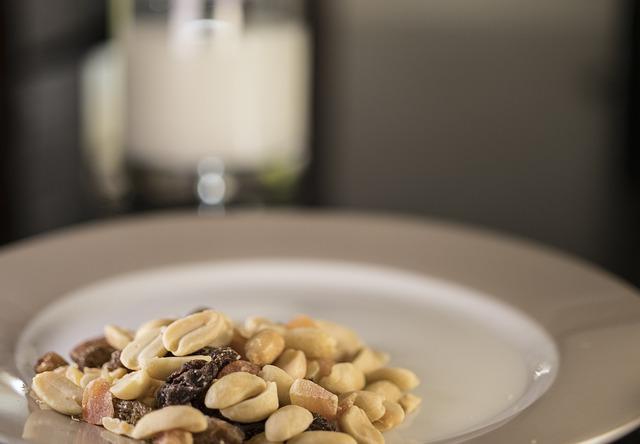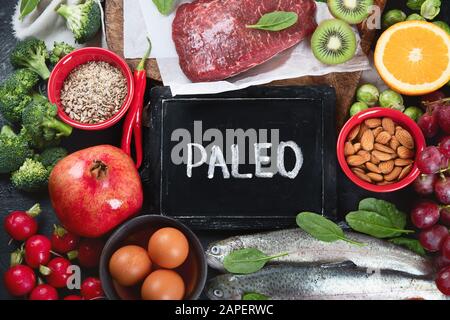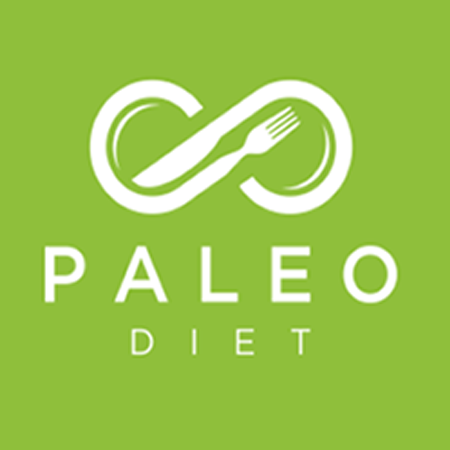
It is not the right diet for everyone. Many old diet and nutrition myths still hold true to doctors' offices. These diets have many benefits. The health benefits of Paleo are numerous. Continue reading for more information. Your individual health needs will determine whether or not this diet is right for you. This article will help guide you through the process of starting a low carb lifestyle. Let me answer some of your questions.
Inflammation is reduced
Paleo was designed to reduce inflammation. These conversations usually revolve around questions about foods and nutrients that may trigger inflammation. People tend to pay attention to carbs. A low-carb diet can reduce inflammation. What makes a low-carb diet so anti-inflammatory and what are the benefits? Here are a few tips to help you cut back on your carb intake and experience the benefits of a low-carb diet.
The Paleo diet offers many benefits but there is not enough research to prove its effectiveness for Hashimoto’s patients. You should consult your doctor to ensure that you're getting the right treatment. However, studies have suggested that the diet is helpful for managing symptoms of chronic illnesses, such as Crohn's disease, ulcerative colitis, and rheumatoid arthritis. Although more research is required, it is known that the diet can be used to manage Crohn's disease and ulcerative colitis as well as rheumatoidarthritis.
Triglycerides

The Paleo Diet is often promoted as a weight loss plan. However, there aren't as many studies on the impact of Paleo Diet on triglycerides as you might think. While low-carb diets are known to increase cholesterol levels, and increase triglycerides in the body, studies have shown that these diets also improve heart health. Triglycerides, which are fat-based energy, are stored in fat cells.
Triglycerides, the main component of body fat, are formed by the conversion from calorie intake to the fatty acids. These are stored in fat cells where they can be released as energy. Excessive triglycerides, known as hypertriglyceridemia, can cause adverse effects on the cardiovascular system. A low-carb diet can help lower triglycerides.
Study results showed that those who ate a high level of fats and low levels carbs saw significant reductions in their triglycerides. Their total cholesterol levels also dropped by 13%. This low-carb diet was safe to eat for both overweight and obese individuals. The participants lost an average of 10 lbs and experienced no side effects. An extended trial was conducted with overweight adults who were on a ketogenic for 24 weeks. Results showed lower levels for triglycerides. They also had a lower body weight and BMI. There was also a significant improvement in blood glucose and LDL.
Blood pressure
Many Paleo enthusiasts are concerned about the potential negative consequences of blood pressure on a low-carb diet. Healthy eating can lower blood pressure. This is possible by replacing processed foods and increasing intake of whole foods. In addition, a low-carb diet does not result in orthostatic hypertension, a condition that many people are concerned about. Here are some tips for lowering blood pressure when eating Paleo.

One study suggested that the low-carb diet is a better treatment for high blood pressure than conventional weight-loss diets. This is not conclusive but it is worth noting that it has been proven to lower blood sugar without causing weight loss. Paleo diets can improve glucose tolerance and insulin production, lipid profiles, cholesterol levels, and even improve cholesterol. A moderate weight loss can be achieved on the paleo diet to reduce high blood pressure and obesity as well as increase glucose tolerance.
Weight
The paleo diet is not a new concept. Although it's been around for decades, the paleo diet gained popularity when athletes and Crossfitters began using it to fuel themselves. There are many companies that offer paleo-friendly foods today. But what exactly does it do? What can it do for your body? What is it capable of doing to help you shed weight? Learn more. This article will explain the pros and cons of a paleo-diet.
Mixing carbs and fat triggers reward circuits within the brain. If carbs and fat are mixed together, the insulin response increases more than usual, which causes the body's ability to store more fat. This combination can also be very appealing, making it easy to gain excess weight. The paleo diet should be restricted in sugar, grains, processed vegetable oils, and other harmful substances to help you combat this problem. Instead, eat natural whole foods and limit processed food.
FAQ
How do I get hired to cook?
Through word-of-mouth, you can find a job to be a chef. Your friends and family members might know of a restaurant that needs additional staff. A lot of restaurants also advertise their openings on bulletin boards or websites.
Are you able to cook by yourself?
Self-taught cooking is possible! The joy of cooking is something that everybody enjoys doing, no matter their skill level. If you are interested in learning how to cook, start cooking at home. Start small, such as making pancakes for breakfast and spaghetti sauce at dinner. Try new recipes and be open to experimentation when learning how to cook. It is possible to make mistakes.
The time it takes to learn to cook can vary from just a few hours up to several weeks, depending upon your skill level. It's important that you remember that cooking does not mean following a recipe. There are many ways of cooking food. So if you have an idea for a recipe, use it.
What is the average time it takes to become a chef? What is the average career track?
The average time it takes to become a chef is five years. In this period, you will learn basic cooking skills and experience as a kitchen assistant. After your training is complete, you will be eligible to apply for a job as a sous chef, executive chef, or line cook. The salary range for a chef is between $25,000 to $60,000 per annum.
How do I become a chef?
First, you need to earn a culinary arts diploma in order to get a job working as a chef. The next step is to join a professional association like the American Culinary Federation. This organization offers certification exams and networking opportunities.
What is the best career path for someone who wants to be a chef? How do I get started as a chef?
As an apprentice, you can start your journey to becoming a chef. Apprenticeships give you the opportunity to work for many years without having to pay tuition fees. After you complete your apprenticeship, it is possible to apply for a job as a sous-chef. Sous chefs assist cooks with tasks such as making salads, and desserts. They also oversee the entire operation of the restaurant.
How do I learn to cook like a professional?
Cooking is one of the best ways to become a better person. Cooking healthy meals for your family and friends is a great way of increasing self-confidence and learning new skills. Start cooking at home if you want to learn how to cook. It is important to discover what type of recipes you enjoy. You can then read books about other cuisines like Mexican, Chinese and Italian. Finally, learn how to make different dishes until you are comfortable with them.
How do I learn about cooking and baking?
All over the country, cooking classes are offered. Many schools offer courses in baking, pastry, and wine tasting. You can take a class at your local vocational school or community college if you are interested in learning more about cooking.
Statistics
- According to the BLS, chefs earn $58,740 a year. (learnhowtobecome.org)
- In the United States, the category is estimated at $23.2 billion annually and is growing faster than the market. (washingtonpost.com)
- The median pay for a chef or head cook is $53,380 per year or $25.66/hour, according to the U.S. Bureau of Labor Statistics (BLS). (learnhowtobecome.org)
External Links
How To
How to make the perfect omelet
Omelets have always been a favourite food to eat for breakfast. How do you make them perfect? I've tried many different methods and recipes, but none of them seem to work! So today, I want to share some tips and tricks with you so you can make your own delicious and fluffy omelets every morning.
Before we start making omelets, let's remember that eggs are temperamental. The eggs must be fresh from an organic source and kept at room temperature until they are ready to be cooked. If you don't keep them cold enough, the whites won't form properly, and the yolks will break down too much and become runny. This can make your omelets look bizarrely colored. If you plan to cook the eggs right away, it is best to use room temperature eggs.
You might also try separating the egg before adding to the pan. You don't want the white to get mixed with the yolk, as this could cause the egg to curdle.
You could end up burning the bottom half of the egg if the egg is added directly to the heat source. Instead, heat the egg in a microwave for 10 seconds and then place it in a pan. The microwave heat is sufficient to cook the egg without overcooking.
Next, let's discuss mixing the eggs. When you mix eggs together, you want to beat them well. You can do this by turning the bowl of your mixer upside down. Next, shake the bowl vigorously. This allows the air to be whipped and the egg to be mixed thoroughly.
Now it's time to have fun: pour the milk into the mixture. Pour half the milk into the beaten egg mixture and then fold in the eggs. If you still see streaks of eggs, don't worry. These streaks will disappear once the omelet has been turned over.
After you have folded the eggs, heat the oil in a pan over medium heat. Once the oil has started to sizzle, turn the heat down to low. Once the oil begins to heat, add 1/4 cup butter and swirl the pan to coat it. Next, carefully open the lid and sprinkle salt into your pan. An additional pinch of salt will prevent the omelet form sticking to your pan.
Cover the pan once the omelet is formed and allow it to cool completely. Flip the omelet with a spatula, or flip it upside down. Cook the second side for a minute or so. Take out the omelet and place it in a bowl.
This recipe works best using whole milk. Skimmed milk is also possible.